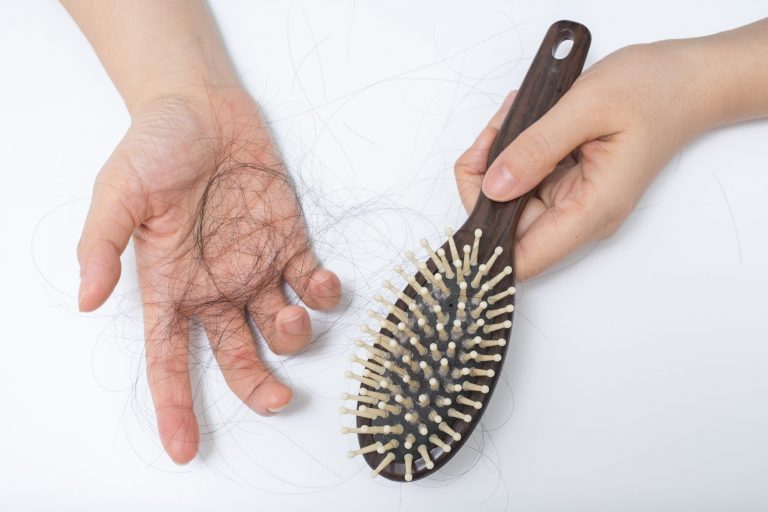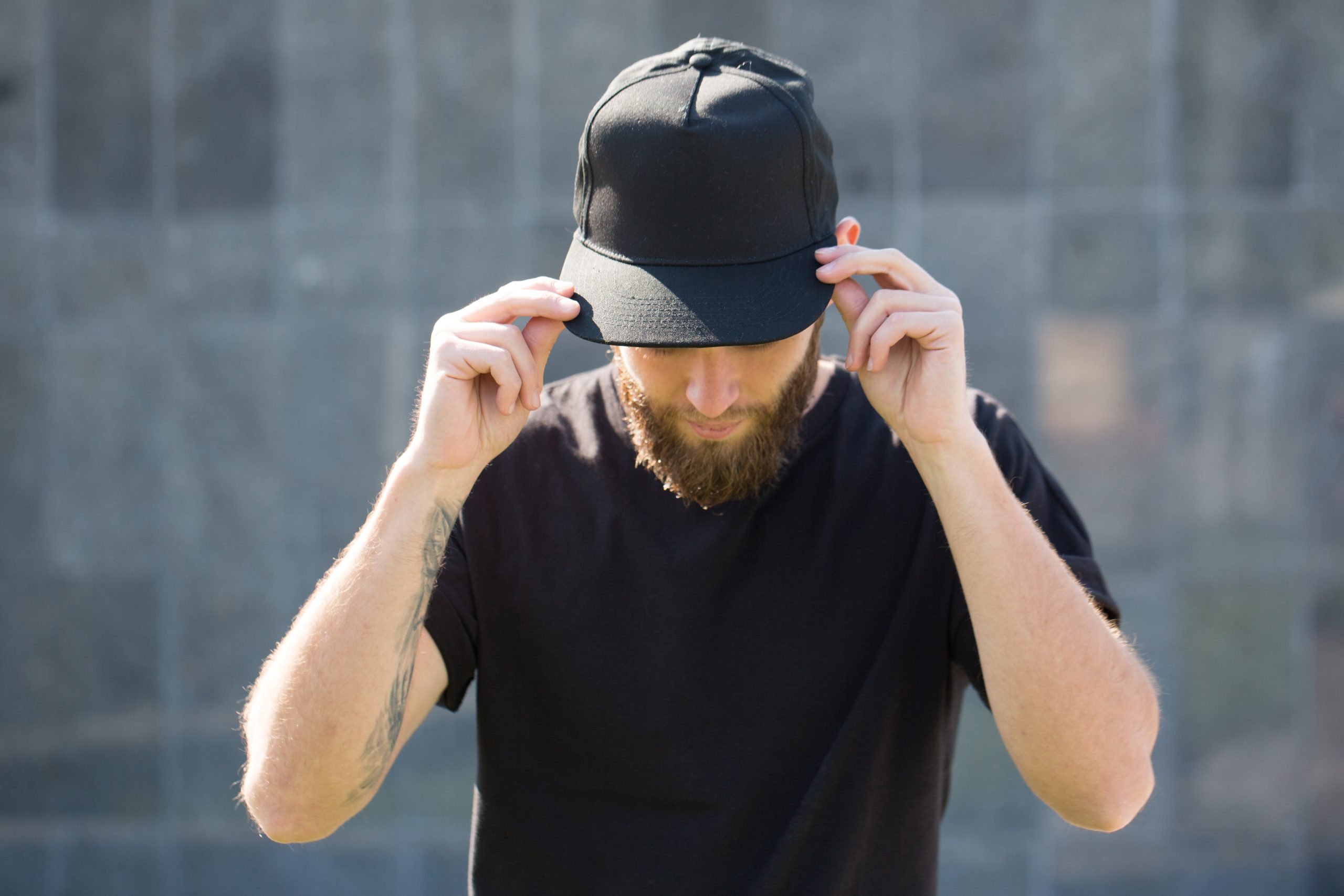
Page Contents
There have been several factors attributed to hair loss. Over the years, people started to link wearing hats to hair loss. This is because after removing their hats, they noticed bits of hair left behind in the hat.
Another thing to remember is that a lot of people who are losing their hair may rely on a hat to hide it, so losing hair is already on their mind.
We’re going to explore what hair loss is, what triggers it, and how to prevent or cure it. We’ll also answer the question–does wearing a hat increase hair loss.
Hair Loss
Hair loss, also known as alopecia or baldness, is the loss of hair. While it can be from any part of the body, typically it’s on the head. Hair loss can be temporary or permanent, depending on the etiology. It’s also different from hair thinning or breakage.
Genetic factors can also lead to hair loss. But what about other things?
Here are a couple of things you might not have thought about. Each of these can contribute to hair loss….things like a deficiency of thyroid hormone, or a nutrition deficiency. If you have a protein deficiency or low vitamin levels, you might experience hair loss.
What other factors can play into hair loss? Sometimes, smoking can lead to hair loss. Pregnancy, medications like chemotherapy, or anemia can also cause issues. On an average day, dermatologists say it is normal to shed between fifty to one hundred strands of hair. This isn’t hair loss. This is normal. Now, if you’re losing higher quantities of hair, you might be concerned.
Types of Hair Loss
There are different types of hair loss. Each can affect both genders. It can also be reversible or permanent.
- Alopecia areata – This is an autoimmune disease. What that means is that the body’s immune system targets the hair follicles. This disrupts the hair’s natural growth and formation. It’s characterized by circular bald patches on the scalp. When this spreads , it leads to another condition called Alopecia totalis.
- Male or Female pattern hair loss (androgenetic alopecia) – This is often attributed to genetics and hormones. It’s a type of permanent hair loss, and causes balding. The way it shows varies in males and females. It’s more noticeable in men since it starts earlier in their lives. The hair loss typically occurs in front and top of the head. For women, it’s more noticeable on the crown and top of the hair.
- Traction or Friction hair loss – This hair loss is caused as a result of tension or pulling on the scalp for an extended period. This damages the hair follicles. It’s usually common in people who put their hair in a high, tight ponytail or wear tight braids. It can also be a side effect of cosmetic surgery such as a face lift as it leads to hair tension.
- Telogen effluvium – This has to do with the hair follicles in a certain stage of growth. When they prematurely enter the telogen phase, it causes problems. This is usually caused by illness, trauma, stress, or major surgery. It can also be a side effect of some drugs such as antidepressants, though it is reversible.
- Anagen effluvium – This refers to the shedding of hair during the hair growth phase (anagen)
- Alopecia Universalis – This is when you lose your hair all over your body including the head, skin, ears, nose, and pubic regions. Unfortunately, this makes patients susceptible to infections and bacteria.
- Trichotillomania – This is hair loss due to pulling and twisting one’s hair out. It’s usually associated with children.
- Tinea capitis – This is a fungal infection that affects the scalp. This is usually more common in children, especially of black Africans and African-American descent. Bald spots and dermatitis typically accompany the condition. It’s reversible and can be cured by using either oral or topical antifungals. Another prevention tactic is to avoid sharing hairbrushes and combs.

Hormones and Hair loss
When there’s a reduction in the delivery of needed nutrients to the hair follicles, this can lead to hair loss. Another thing that can lead to hair loss is a traumatic event. If somebody is highly stress, the hair can shed, thin, or fall out. You may see bald patches.
Alopecia is not only common to men but also women. It also manifests differently between the genders. Men’s baldness is detected by the presence of a receding hairline. He’ll notice the loss of hair from the front of the head to the temple. With women, it’s characterized by thinning of the hair.
The prominent cause of alopecia is Dihydrotestosterone (DHT), which is an endogenous androgen hormone.
DHT is an androgenous hormone. This is a by-product of testosterone. It’s a prominent male hormone that’s responsible for the formation of male genital in a fetus.
For people who are susceptible to balding genetically, the hormone binds to the receptors in the scalp. This can lead to the shrinkage and weakening of hair. This process is called miniaturization. It eventually leads to complete hair loss and can start any time after puberty.
DHT leads to the inflammation of the blood vessels. Why this matters is because they deliver nutrients to the cells of the hair follicles.
One way to prevent and slow this down is by blocking DHT. There are two FDA approved products for the treatment of hair loss. One is Finasteride, the other is Minoxidil. These are oral and topical medications.
Minoxidil, originally marketed for the treatment of hypertension, stimulates hair growth. You massage this topical formula into the bald scalp, which helps increase blood flow.
Finasteride acts by inhibiting 5-alpha-reductase. This is an enzyme that acts along sides testosterone to produce DHT. The good news is, there’s no known side effects associated with blocking DHT.
There are other unconventional methods such as Chinese acupuncture and Botox. We’d suggest that before trying any of these treatments, speak with your dermatologist or physician.
Hat Wearing and Hair Loss
Okay…
So what about hats? While people associate wearing hats with hair loss, it’s not what it seems. Hat wearing doesn’t lead to hair loss or baldness.
A study carried out on 92 sets of identical twins showed that the twins that wore no hat experienced less hair loss in the area above their forehead more than the twins who didn’t wear hats. This experiment shows that there are other environmental and genetic factors that contribute to hair loss than hats.
Let’s see why…
Consistently wearing tight hats can lead to traction or friction alopecia. This is because of decreased blood flow to the hair follicles. Here’s the thing, it’s reversible. The hair will grow back if stopped.
People also associate hats with hair loss because some people choose hats to cover their baldness. So when they see somebody bald who isn’t wearing a hat, they may relate the baldness to the hat. It’s simple association.
While wearing a hat on a sunny day or while exercise, you might sweat more than usual.
The salt from the sweat can irritate your scalp. When the scalp becomes inflamed, it can speed up the balding process.
On a side note, it’s important to keep your hats clean and hygienic. Unwashed hats can accumulate dust and dirt and even bacteria. This can lead to irritation or inflammation of your scalp.
Hats, in general, don’t cause hair loss. In fact, they have a few benefits that might prove useful. Consider this, a hat can protect the scalp from harmful UV light, which can lead to some type of skin cancer. It can also protect your face and eyes from too much sunlight.
If you’re going to wear a hat, be sure not to wear it too tightly. Get hats with adjustable straps, and remember to practice good hygiene by keep your hats clean.






